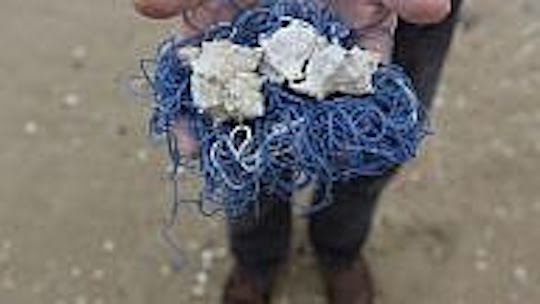
‘Out of the blue,’ regal Biblical color ‘tekhelet’ returns to modern Israel
A new exhibit exploring the mysterious color tekhelet, a vibrant blue dye mentioned 49 times in the Torah and later chosen as the central color of Israel’s national flag, opened this week at the Bible Lands Museum in Jerusalem.
By Eliana Rudee
(JNS) A new exhibit exploring the mysterious color tekhelet, a vibrant blue dye mentioned 49 times in the Torah and later chosen as the central color of Israel’s national flag, opened this week at the Bible Lands Museum in Jerusalem.
The source of the color tekhelet was a mystery for nearly 1,500 years until later identified by archaeological evidence from around the eastern Mediterranean coast.
The tekhelet exhibit at the Bible Lands Museum was launched in honor of Israel’s 70th year of independence, as the power and significance of tekhelet emerged from Jewish memory in modern times as the inspiration for Israel’s vibrant national flag.
The exhibit narrates the quest for the Biblical blue color, “yearned for by mankind throughout generations.”
“Its sacred meaning took root in Jewish history when the Israelites were commanded to cover the Ark of the Covenant and Tabernacle utensils with tekhelet dyed cloths, and to tie tekhelet threads to the corners of their garments as a reminder of God and his commandments,” curator Yehuda Kaplan told JNS.
As the dye industry declined, the origin of the color baffled many for centuries, only to be recently identified by marine biologists and Talmudic researchers who discovered the source — murex snails indigenous to the Mediterranean shores, near Haifa.
The fade-resistant pigment from a glandular secretion of murex snails was likely used in ancient times by early peoples of the Near East, applied to textiles for the biblical blue. The color mirrors the stone lapis lazuli (called sapphire in the Bible), imported from Afghanistan to the ancient Near East, and prized for its heavenly color of God’s throne and footstool.
Archaeological evidence for the tekhelet industry, dating back to 15th century BCE, includes remains of crushed murex shells and potsherds bearing remains of the dye, in addition to small pieces of dyed textiles discovered in Syria and documents from the same time period mentioning the color.
Tekhelet textiles became prized commodities in the ancient world, as unique expressions of royalty and divinity.
“The large number of snails required for their production and the complex manufacturing process, together with their beauty and resistance to fading, made textiles dyed in blue and purple into luxury items identified with royalty and divinity,” said Kaplan.
It is described as the pure color that made up the High Priest’s robe and the thread used in his headdress, as well as the color used on tzitzit (tassels of the Jewish tallit, or prayer shawl) to remind the Jewish people of God and his commandments.
“The decline of the tekhelet dye industry [and along with it, the skill required to produce these dyes] after the Muslim conquest in the 7th century CE led to the disappearance of the blue thread from the tzitzit,” Kaplan said.
Dr. Baruch Sterman, author of The Rarest Blue: The Remarkable Story of an Ancient Color Lost to History and Rediscovered, also noted at a Jerusalem press conference ahead of the exhibition opening, “During Roman imperial control of the region, using tekhelet was made a crime of treason punishable by execution, and the knowledge of how to make it was lost for 1,200 years.”
As tallit reverted to a prayer shawl rather than a daily garment, the shawls were decorated with blue stripes as a memento to the tekhelet that was once part of the tzitzit.
Flag of Israel
It is thus no surprise that when it came to choosing the colors of the Zionist flag in the 19th century, tekhelet was a strong contender. The leaders of the Zionist movement found that tekhelet blue stripes with a Star of David in its center perfectly expressed the identity and national aspirations of the Jewish people, and this is what was used.
Mirroring old practices, “This is how the Jews decided to identify themselves and be identified,” said Sterman.
Then, in 1948, the flag of the Zionist movement became the national flag of the newly established state of Israel.
“Now not only an expression of Jewish personal devotion that survived millennia of historical transformations, but also imprinted as a modern symbol of national pride and determination on a global stage, tekhelet blue lives on,” stated Kaplan.
Since its discovery, tekhelet is now seeing a revival.
According to Rabbi Tuly Weisz, Director of Israel365, “Today, for the first time in centuries, people are once again wearing tekhelet on their tzitzit. From even the smallest sea creature, we continue to see the wonders of the Bible come to life in the land of Israel.”